Graphic tees have become iconic in fashion history, representing a unique blend of art and apparel. Originating in the 1950s, these versatile garments have undergone significant evolution, reflecting changes in society and culture over the decades. From simple logos to intricate designs, graphic t-shirts have mirrored cultural shifts and trends, making them a powerful medium for personal expression. In the 2020s, advancements in printing technology and a focus on sustainability continue to shape the future of graphic t-shirts, ensuring their place in fashion for years to come.
1950s: Cultural Influence, Technological Advancements, and Early Adoption
Cultural Influence and Trends
Pop Culture Icons
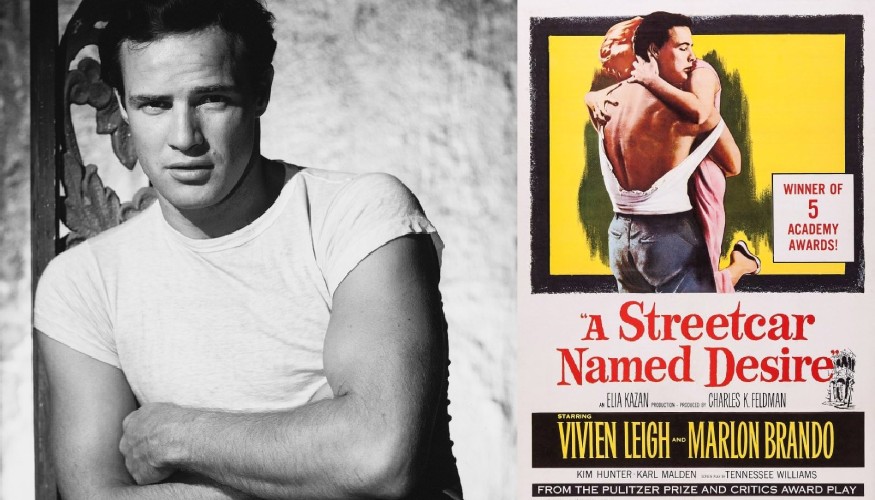
In the 1950s, actors like James Dean and Marlon Brando significantly impacted fashion trends. Dean’s portrayal in “Rebel Without a Cause” (1955) featured a plain white tee, pairing it with jeans to create an iconic look that symbolised youthful rebellion. This style choice helped shift the perception of t-shirts from mere undershirts to acceptable outerwear. Similarly, Marlon Brando’s role in “A Streetcar Named Desire” (1951) showcased a tight-fitting t-shirt, further cementing its place in American culture as more than just an undershirt.
Casual Wear Adoption
The 1950s marked the beginning of t-shirts being accepted as casual wear. There was a noticeable shift in fashion trends towards more casual and practical clothing items, partly influenced by the cultural icons of the time who popularised the look.
Early Branding Efforts
The 1950s saw the initial steps towards using t-shirts for branding and commercial purposes. Companies began to recognise the potential of t-shirts as a medium for advertising. Notable examples include Walt Disney, who used promotional tees to market his brand, including Disney films and the newly opened Disneyland theme park.
1950s Notable Examples
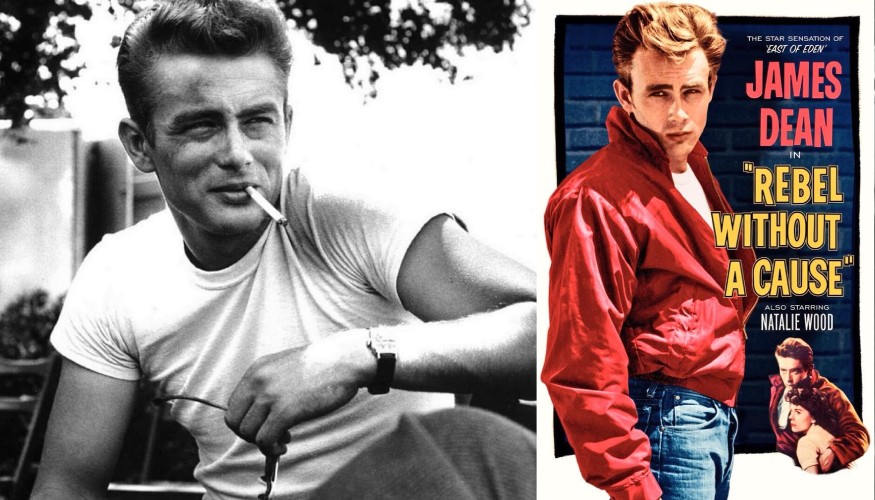
- James Dean in “Rebel Without a Cause” (1955)
James Dean’s iconic look in a plain white tee and jeans in the film “Rebel Without a Cause” symbolised youthful rebellion, greatly influencing the popularity of t-shirts as outerwear. - Marlon Brando in “A Streetcar Named Desire” (1951)
Marlon Brando’s portrayal of Stanley Kowalski in a tight-fitting t-shirt showcased a rugged and masculine image, helping cement the t-shirt’s place in American culture as more than just an undergarment.
1960s-1970s: A New Era in T-Shirts
Counterculture Movement (1960s)

During the 1960s, graphic t-shirts became powerful symbols of rebellion and individuality. They were often decorated with anti-establishment messages, political statements, and unique expressions of personal identity. Activist groups such as the Students for a Democratic Society (SDS) and the Black Panther Party used tees with impactful imagery like raised fists and white letters, to represent their causes and rally support.
Pop Culture Icons (1960s)
While actors like Marlon Brando and James Dean had already begun shifting the perception of t-shirts from underwear to a cool, rebellious fashion statement in the previous decade, their influence continued into the 1960s, further solidifying the t-shirt’s status as an emblem of rebellion. It’s hard to imagine a time without their iconic images, which greatly contributed to the cultural significance of the first t-shirts worn as outerwear.
Music Influence (1960s-1970s)
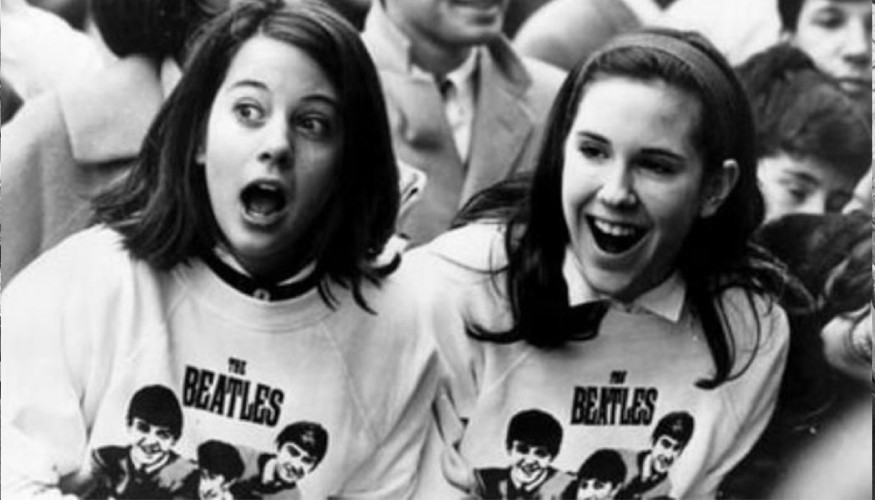
“Excited young fans wearing Beatles t-shirts, vividly expressing joy and fandom during the height of Beatlemania in the 1960s.”
In the 1960s, bands like The Beatles and The Rolling Stones recognised the potential of printed tees for merchandising. The Beatles’ manager, Brian Epstein, approved nearly every licensing request to promote the band through merchandise, which included white cotton undershirt t-shirts. This trend continued into the 1970s, with iconic band tees featuring logos and artwork from bands like The Rolling Stones becoming hugely popular. Wearing a band’s tee showed allegiance to the music and the associated youth culture. Tees were a huge part of this movement, allowing fans to express their musical tastes visually visually.
Tie-Dye (1960s)
Tie-dye techniques also emerged in this decade, allowing for unique and colourful designs on t-shirts, which became a hallmark of the counterculture movement.
Dual Rotating T-Shirt Printing Press (1970s)
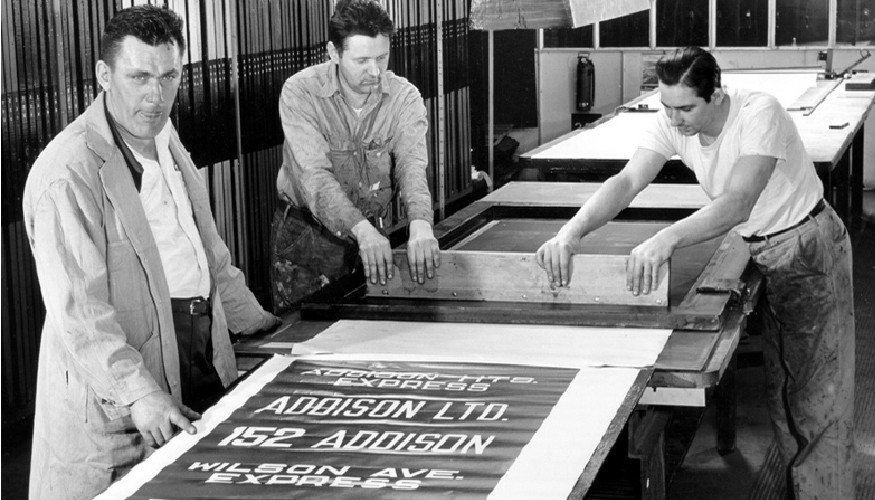
In 1969, Michael Vasilantone invented the dual-rotating printing press, which allowed for faster and cheaper mass production of tees. This innovation ushered in the “golden age” of band merchandise tees, making them more accessible and popular.
Anti-Vietnam War Movement (1960s)
During the Anti-Vietnam War movement, protesters wore t-shirts with anti-war messages and slogans, turning the graphic tee into a medium for political expression and protest.
Casual Wear (1970s)
The 1970s saw a shift towards a more casual fashion aesthetic, with t-shirts becoming a staple item often paired with jeans. During this period, she embraced a laid-back style that resonated with the growing acceptance of casual wear.
Popular Designs (1970s)
Iconic designs from the 1970s included Robert Crumb’s “Keep on Truckin’,” smiley faces and pop culture references like “The Fonz” from Happy Days, reflecting the decade’s diverse influences.
Commercialisation and Branding
Fan-Made Designs (1970s)
Fans often created their bootleg graphic tees featuring their favourite bands, as seen in the Led Zeppelin concert film “The Song Remains the Same.” This grassroots approach to merchandising highlighted the demand for band-related apparel.
Rise of Merchandising (1960s-1970s)
Following the success of bands like The Beatles and The Rolling Stones, musicians realised the importance of merchandising. The 1970s saw a significant increase in the production and sales of official band tees, solidifying their place in pop culture.
1960s-1970s Notable Examples
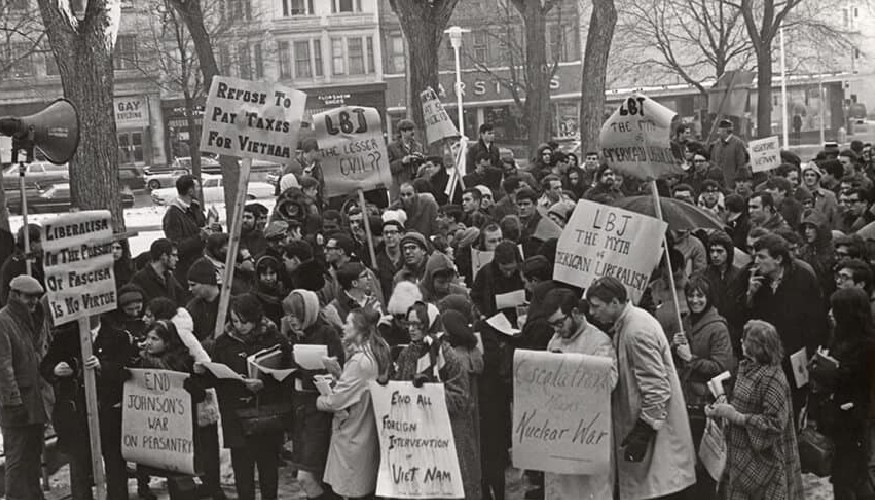
- Students for a Democratic Society (SDS) (1960s)
In 1969, SDS organisers wore t-shirts with a raised red fist during a strike against Harvard University’s support of the Vietnam War, demonstrating the power of graphic t-shirts in political activism. - The Beatles’ Merchandising (1960s)
The Beatles’ extensive efforts in merchandising, including their iconic band tees, were major driving forces behind the popularity of graphic tees in the 1960s. - John Lennon’s Souvenir Tee (1970s)
An iconic black and white photo of John Lennon wearing a “New York City” shirt on the roof of his penthouse in 1974 became an enduring image associated with the artist and the city. - The Rolling Stones “Hot Lips” Logo (1970s)
The “Hot Lips” logo designed by John Pasche for The Rolling Stones became a popular graphic tee design, symbolising the band’s edgy and rebellious image.
1980s: Pop Culture Boom
Cultural Influence and Trends
Katharine Hamnett’s Message Shirts
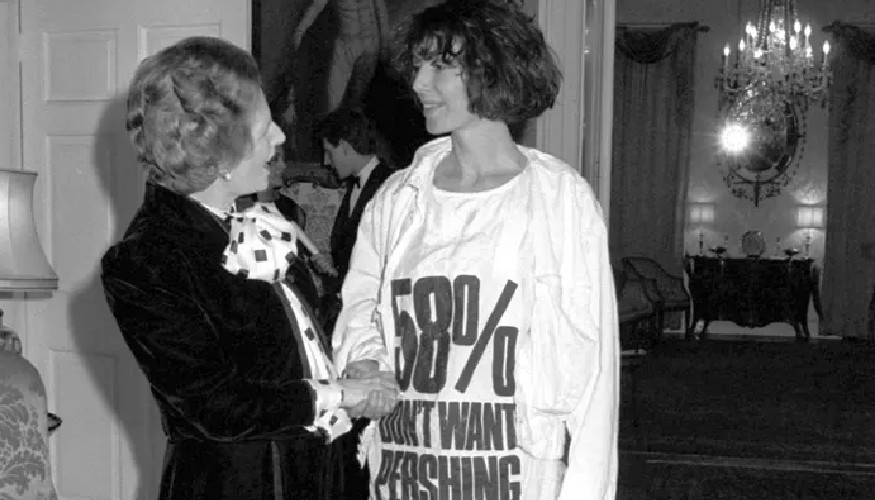
British designer Katharine Hamnett revolutionised graphic tees in the 1980s with her bold, block-letter slogan shirts. These shirts often carried political messages, becoming iconic fashion statements of the decade. Hamnett’s designs highlighted the power of clothing as a medium for social and political commentary.
Band Merchandise
The 1980s saw a surge in the popularity of band t-shirts from groups like The Rolling Stones, Pink Floyd, and The Beatles. Band tees became staples in youth fashion, serving as a form of personal expression and a way to showcase musical allegiance. These shirts were more than just merchandise; they were symbols of identity and culture, illustrating the significant role of graphic tees in the history behind societal and cultural expression.
Screen Printing
Screen printing, originating in China during the Song Dynasty (960–1279 AD), used woven mesh screens to transfer ink onto fabrics. This technique spread to Japan and later to Europe in the 17th century, where it decorated items like playing cards and wallpapers. The modern process of t-shirt printing was significantly advanced in the early 1900s by Samuel Simon, who patented a technique that contributed a new chapter to the history of the graphic tee. screen printing press in 1907. By the 1980s, screen printing, combined with refined plastisol ink from 1959, allowed for vibrant, durable designs, contributing to the widespread popularity of graphic tees.
Plastisol Ink
Although invented in 1959, plastisol ink became more refined and widely used in the 1980s. This type of ink enabled more complex and durable designs on t-shirts, enhancing the quality and appeal of graphic tees.
Fashion Trends
Athletic and Casual Wear
The early 1980s saw a shift towards casual and athletic clothing, including t-shirts. This trend was partly driven by the global recession, which made low-maintenance and affordable clothing more desirable. Graphic tees fit perfectly into this new, relaxed fashion ethos.
New Wave Influence
The new wave and post-punk music scenes influenced mainstream fashion during this time. Slim-fitting suits, thin neckties, and striped t-shirts were often paired with bold shirts, creating a unique and edgy look that defined the era.
Unisex Accessories
Graphic shirts were frequently paired with popular accessories of the time, such as jelly bracelets, digital watches, and large plastic-framed glasses. These accessories complement tees’ bold and expressive nature, enhancing their overall appeal.
Market and Commercialisation
Corporate Branding
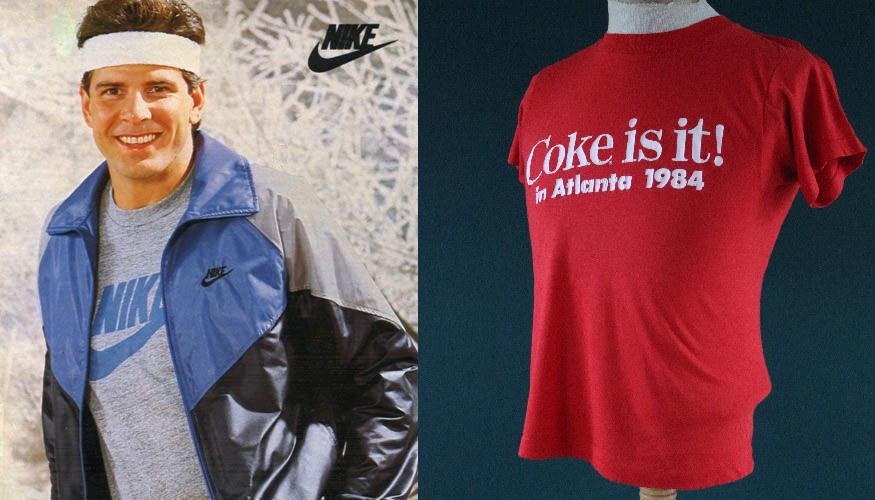
The 1980s saw the rise of logo tees as major brands like Nike, Calvin Klein, and Coca-Cola began using t-shirts as marketing tools. This trend helped to cement the tee as a mainstream fashion item, as these branded shirts became highly sought after.
Popularity Among Teens
T-shirts became a staple in teen fashion, often featuring popular culture references, band logos, and humorous slogans. Teens were a significant driver of the graphic tee market, using these shirts to express their identities and interests.
1990s: Cultural Influence, Technological Advancements, and Market Trends
Cultural Influence and Trends
Grunge and Alternative Rock
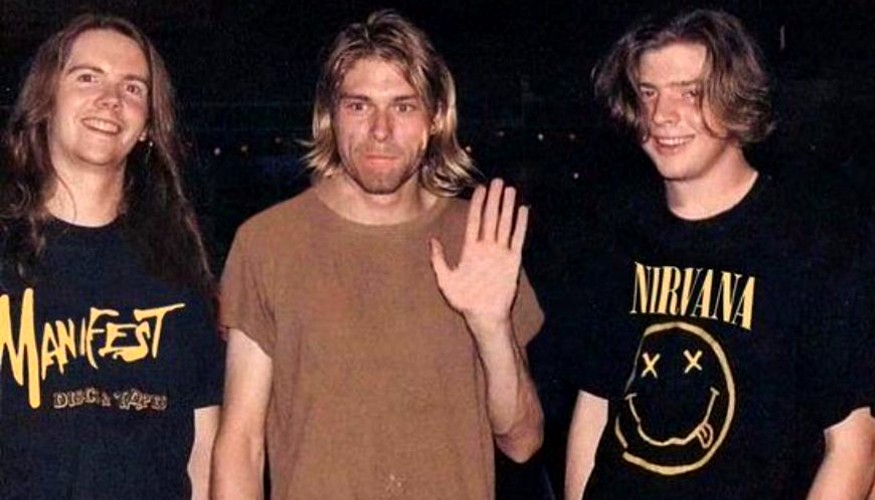
The early 1990s saw the rise of the grunge movement, heavily influenced by bands like Nirvana and Pearl Jam. Graphic tees featuring band logos and album art became staples of grunge fashion, typically paired with flannel shirts and ripped jeans.
Streetwear Revival
As the grunge look waned in the late 1990s, there was a revival of interest in streetwear. Brands like Calvin Klein and Ralph Lauren made a comeback, with clothing showcasing bright colours and bold designs that reflected the vibrant streetwear culture.
Pop Culture and Media
Tees frequently referenced popular TV shows, movies, and video games. Iconic designs included characters from “The Simpsons,” “Friends,” and various superhero franchises.
Sports Influence
The NBA and other sports leagues significantly impacted graphic tee designs. Players like Michael Jordan and teams like the Chicago Bulls were frequently featured on tees, contributing to the sportswear trend.
Technological Advancements
Thermochromatic Dyes
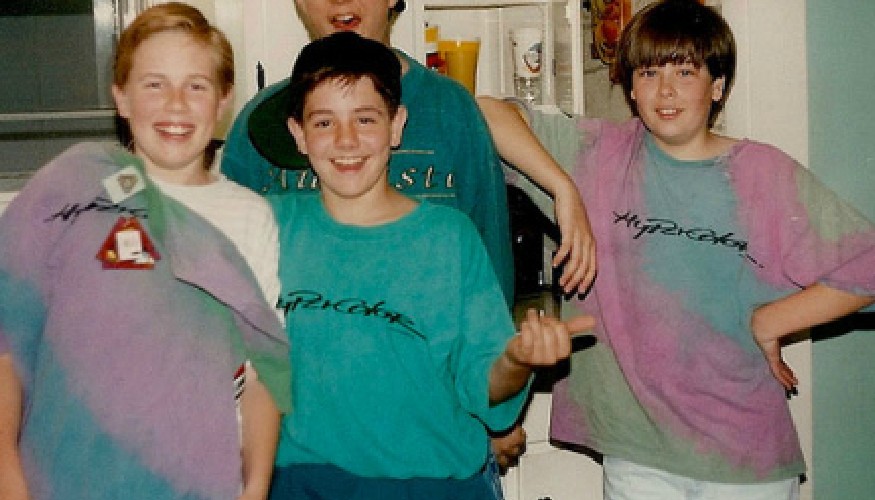
In the early 1990s, the introduction of thermochromatic dyes led to the creation of “Global Hypercolour” shirts that changed colour with heat. These shirts became particularly popular among teenagers in the UK and the US, adding a novel, interactive element to the graphic tee trend.
Inkjet Printing
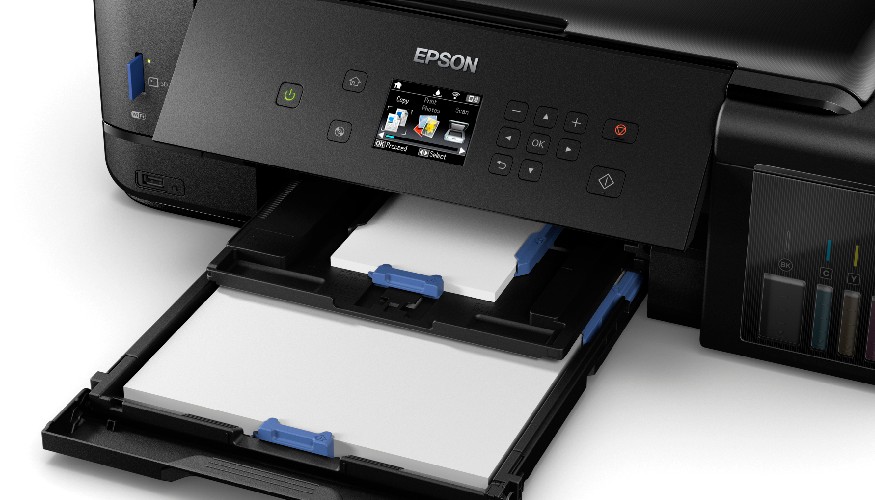
Although inkjet printing technology dates back to the 1950s, it became more commercially viable in the late 1970s. By the 1990s, advancements in inkjet printing allowed for more detailed and colourful designs, enabling smaller brands and individuals to create custom designs more easily.
Digital Design Tools
Improvements in graphic design software made it easier for designers to create intricate and eye-catching graphics, leading to a proliferation of unique and artistic t-shirt designs.
Fashion Trends
High Fashion Adoption
By the late 1980s and early 1990s, high fashion brands like Armani, Calvin Klein, and Versace incorporated graphic tees into their collections. These tees often featured the brand’s logo and were marketed as luxury items. The first instance of such high-fashion t-shirt graphics was a pivotal moment, marking a significant shift in how t-shirts gained recognition as stylish apparel.
Mall Retailers
By the end of the 1990s, the prestige of fashion t-shirts had trickled down to mall retailers like Abercrombie & Fitch, American Eagle, and The Gap. These brands capitalised on the trend by selling countless iterations of their logo printed onto white t-shirts in various colours. The evolution of t-shirt sales in these stores began offering customers a more accessible way to engage with high-fashion trends. The printed t-shirts featured everything from Disney characters to pop culture references, highlighting how t-shirt decoration had become a creative canvas.
Tourist T-Shirts
The trend of tourist t-shirts continued to grow, with nearly every travel destination offering t-shirts as souvenirs featuring local landmarks and attractions. This form of t-shirt served as a souvenir and a wearable postcard, showcasing printed graphic designs that capture the essence of various places.
1990s Notable Examples
Keith Haring
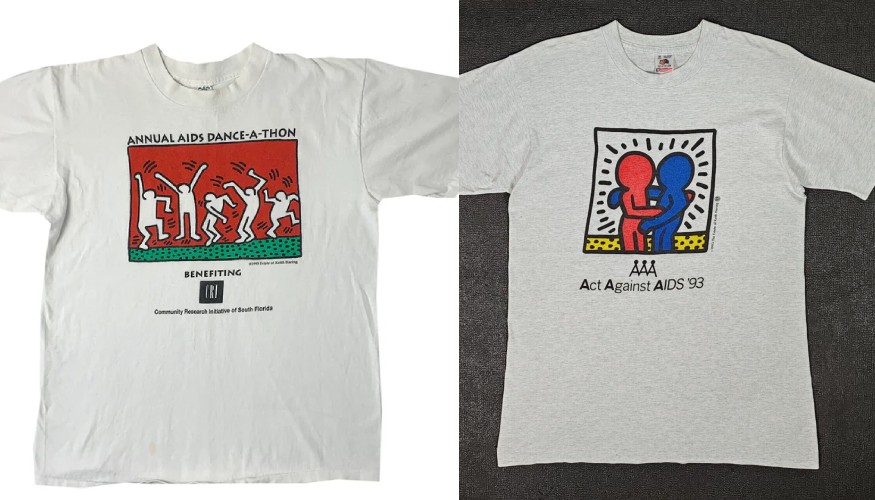
Keith Haring’s influence continued into the 1990s, with his artwork being used for AIDS awareness campaigns and mass-produced on t-shirts, making his art accessible to a broader audience. Haring’s graphic tees were used as fashion statements and mediums for social commentary and political messages.
NBA Influence
NBA players and teams frequently appeared on graphic tees. In recent years, the resurgence of 90s graphic tees has seen players like Chris Paul and Jaylen Brown wearing vintage designs to support various causes. They became a powerful tool for athletes to express their style and advocacy, making tees more popular.
2000s: Technological Advancements and Industry Growth
Introduction and Development of DTG Printing
The 2000s marked significant advancements in Direct-to-Garment (DTG) printing technology, revolutionising the graphic tee industry.
1996: Introduction of the First Commercial DTG Printer
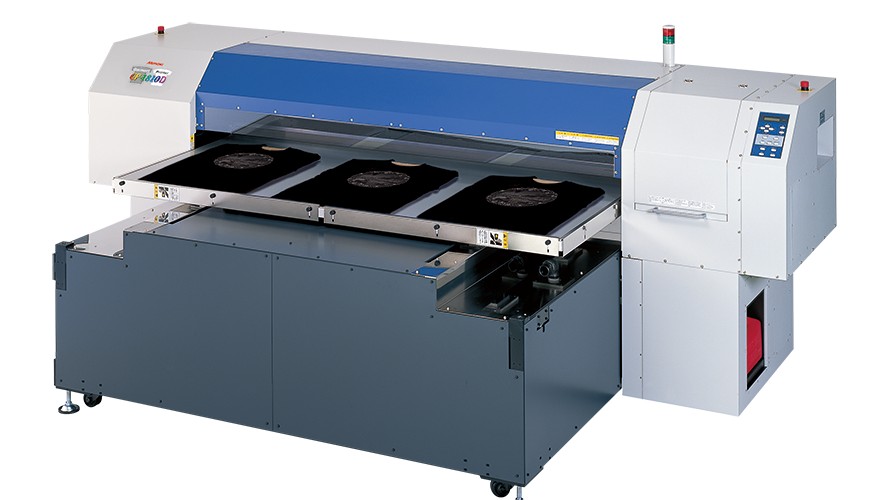
The first known instance of a commercial DTG printer, the “Revolution,” was introduced by DIS in 1996. This innovation set the stage for future garment printing and t-shirt decoration developments. The ability to print directly onto cotton t-shirts began offering designers a new level of creative freedom.
Early 2000s: Growth and Commercialisation
In the early 2000s, companies like Kornit, U.S. Screen, and Mimaki further developed and commercialised DTG printers, making them more accessible and efficient for small businesses and individual creators. This period saw t-shirt sales increase significantly as the technology evolved, allowing for more intricate printed graphic designs on white t-shirts and other garments.
2004: SGIA Trade Show Launch
The DTG printer industry officially launched in the US at the SGIA trade show in Minneapolis in 2004. This event showcased the potential of DTG printing to a wider audience, emphasising how printed T-shirts could be used for political and social messages as well as fashion.
2005: Introduction of the First DTG Brand Printer
The “Kiosk,” introduced in 2005, was the first branded DTG printer, symbolising the growing recognition and demand for this technology. This printer made it easier for brands to begin selling white T-shirts with custom designs, meeting the increasing consumer interest in white T-shirts with unique prints.
Mid-2000s: Emergence of Advanced DTG Printers
By the mid-2000s, commercial DTG printers with specialised print heads and software emerged, improving print quality and efficiency. This advancement enabled t-shirts to feature more complex and vibrant designs, contributing to the popularity of oversized t-shirt styles and green tees. The versatility of DTG printing allowed for graphic tees to be used in various contexts, from casual wear to a form of t-shirt branding.
2009: Launch of the DTG Viper Printer
The DTG Viper printer, launched in 2009, featured a belt-fed system that enhanced productivity, catering to the increasing demand for custom and high-quality prints. This period also saw the rise of t-shirt graphics featuring Disney characters, reflecting the broad appeal of printed t-shirts in popular culture. The Viper’s ability to produce detailed and vibrant prints on white cotton t-shirts made it a pivotal tool in the evolution of t-shirt decoration.
Rise of Graphic Tee Fashion
The 2000s saw a renewed interest in graphic tees, becoming a staple in mainstream fashion. Influences from celebrities and fashion designers played a crucial role in this resurgence.
Online Shopping Trends
The internet significantly influenced the sale and distribution of graphic tees, with online shopping becoming a dominant trend.
Emergence and Rise of Print-on-Demand Services
Print-on-demand services democratised graphic tee production, allowing small businesses and individual creators to produce and sell custom designs without large upfront investments. This model provided flexibility and reduced financial risks, fostering a diverse and vibrant market for graphic tees.
Customisation Trends
The rise of custom designs and personalisation became a major trend in the 2000s. E-commerce platforms integrated with DTG printing technologies enable consumers to easily create and purchase custom graphic tees tailored to their preferences and styles.
2010s-Present: Technological Advancements, Fashion Trends, and Market Evolution
2010s: Fashion Renaissance and Ethical Statements
Luxury Fashion Incorporation
During the 2010s, graphic tees experienced a “fashion renaissance” as luxury fashion labels like Chanel, Gucci, and Louis Vuitton began to embrace them. These high-end brands incorporated bold designs and logos into their collections, elevating graphic tees to a new level of fashion prominence.
Fast Fashion Production
Advancements in digital printing and direct-to-garment (DTG) printing technology allowed fast fashion retailers to produce graphic tees more affordably. This made graphic tees accessible to a broader consumer base, contributing to their widespread popularity.
Social and Political Statements
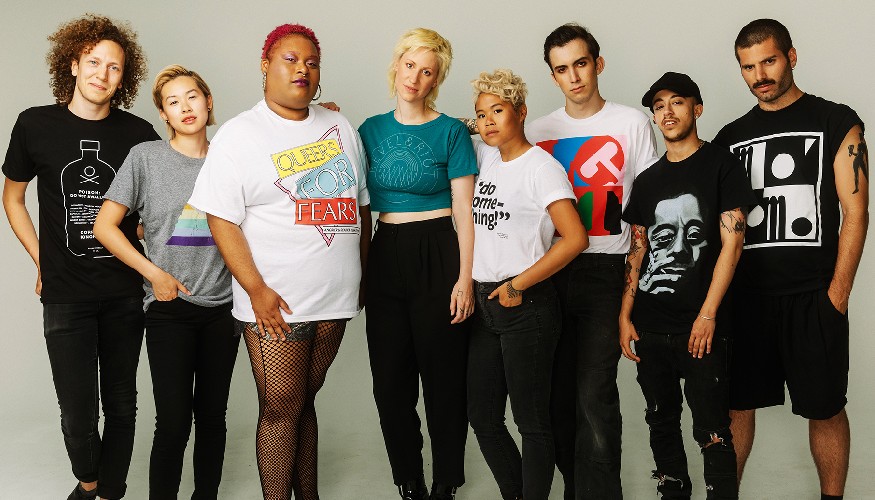
Graphic tees became a powerful medium for social and political expression. Designs featuring feminist messages, LGBTQ+ pride, and other activist themes gained significant traction, turning t-shirts into a canvas for advocacy and personal expression.
Sustainable and Ethical Statements
There was an increased focus on sustainability, with more brands using fair trade and organic cotton sources for producing graphic tees. This shift responded to growing consumer demand for ethically produced fashion.
Technological Advancements
Digital Printing Improvements In DTG
The 2010s saw significant improvements in digital printing technology, allowing more intricate and vibrant designs to be printed directly onto t-shirts. This advancement enabled greater creativity and diversity in graphic tee designs.
DTG printing technology developed further, making it feasible for fast fashion brands to mass-produce graphic tees cost-effectively. This innovation played a crucial role in the proliferation of graphic tees during this decade.
Fashion Trends
Streetwear Influence
Streetwear brands like Supreme were instrumental in driving the graphic tee trend. Their coveted box logo designs became iconic, significantly influencing the fashion landscape.
Athleisure and Streetwear
The rise of athleisure and streetwear further fueled the demand for graphic tees. Comfortable and stylish, graphic tees became a casual, everyday fashion staple.
Sports Influence
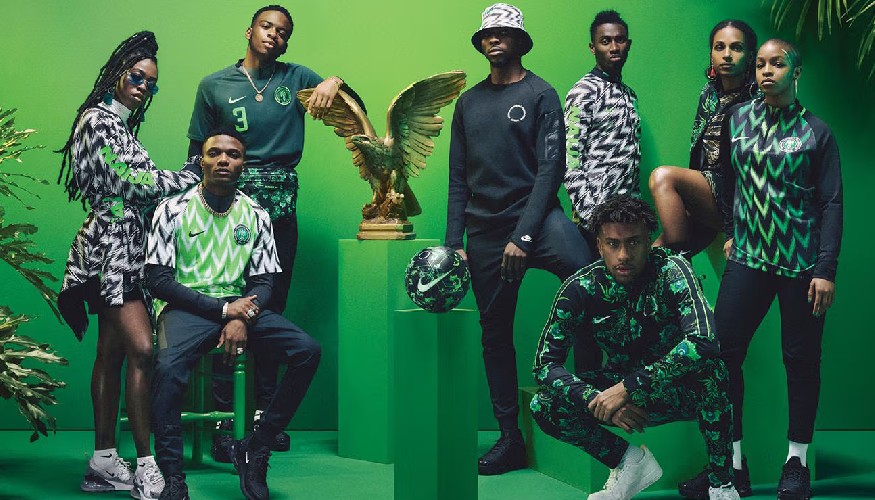
Football and soccer shirts gained a new fashion following, with designs like Nigeria’s 2018 World Cup shirt becoming popular in streetwear circles.
2020s: Technological Advancements and Market Saturation
Technological Advancements
New printing technologies, like Direct-to-Film (DTF) printing, emerged in the 2020s. These advancements allowed for high-quality, customisable prints on T-shirts, impacting the graphic tee market by offering more options for detailed and vibrant designs.
Current Print on Demand Boom
The rise of print-on-demand services democratised graphic tee production. These services enabled individuals and small businesses to create and sell custom graphic tees without needing large inventories or significant upfront costs.
The print on demand (POD) market is experiencing significant growth. In 2022, the market was valued at $6.34 billion, and it’s projected to surge to $8.03 billion by 2023. This upward trend shows no signs of slowing down, with an expected compound annual growth rate (CAGR) of 26.7% from 2023 to 2032, potentially reaching $67.5 billion by 2032. Looking closer, the market could hit $10.17 billion in 2024 if this growth continues. North America is anticipated to be a dominant player with an annual growth rate of 22.8% through to 2030. Meanwhile, the Asia Pacific region is set to be the fastest-growing area, with a 28% annual increase expected between 2023 and 2032.
The Rise of Etsy and Small-Scale Producers
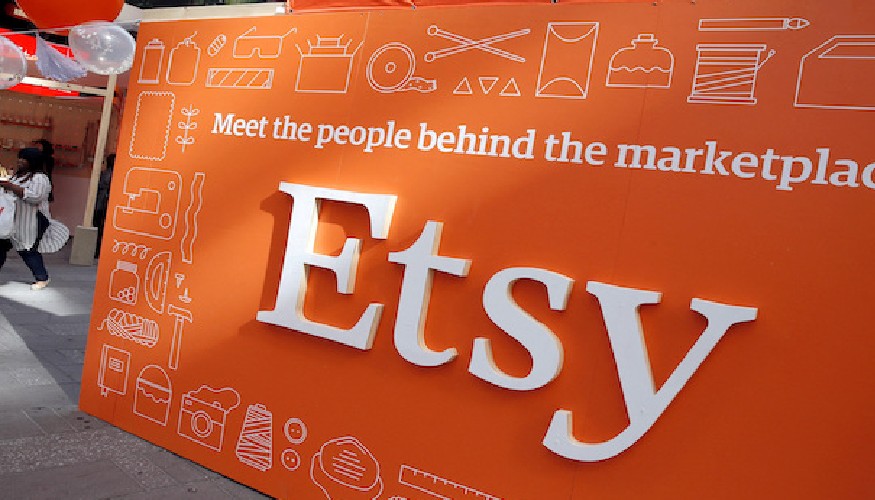
Platforms like Etsy had a significant influence on graphic tee sales. Small-scale producers used commercial printers to create graphic tees from home, contributing to market diversity and giving consumers more unique options.
Market Saturation and Challenges
The graphic tee market faced saturation, presenting challenges such as fluctuating prices, varying quality, and abundant consumer choices. Despite these challenges, graphic tees remained a popular wardrobe staple.
COVID-19 Pandemic
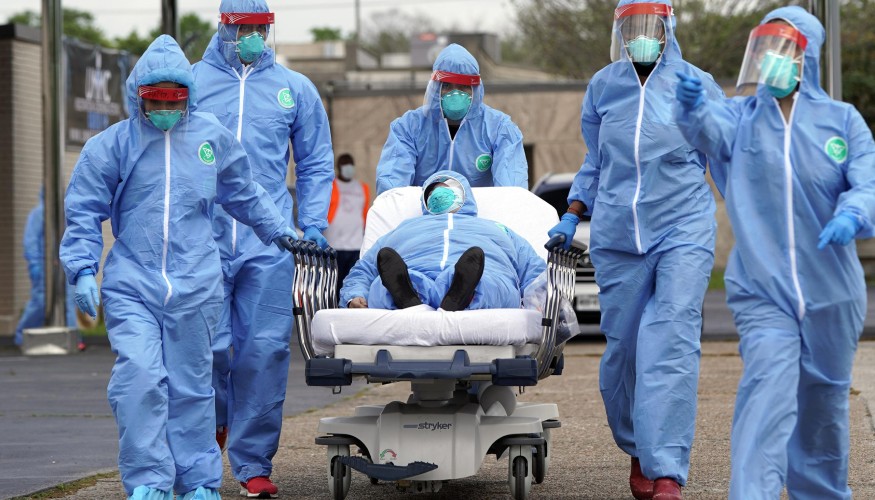
The COVID-19 pandemic led to a resurgence of interest in 2010s fashion, including graphic tees, as people felt nostalgic for the pre-pandemic era. The growth of e-commerce and the influence of social media boosted the popularity of graphic tees, especially those created by independent artists and small businesses.
The Future of Graphic Tees
From their rebellious roots in the 1950s to their current role in fashion and activism, graphic tees have continuously evolved, reflecting societal changes and technological advancements. Each decade has added new dimensions, from bold logos and artistic designs to luxury fashion and political statements. Today, the print-on-demand market for graphic tees is booming, with a projected growth from $6.34 billion in 2022 to an expected $67.5 billion by 2032. This rapid expansion is driven by cutting-edge printing technology and a focus on sustainability, allowing for unparalleled customisation and accessibility. The rise of print-on-demand services highlights how far graphic tees have come, solidifying their place as a timeless symbol of personal expression and cultural commentary.

